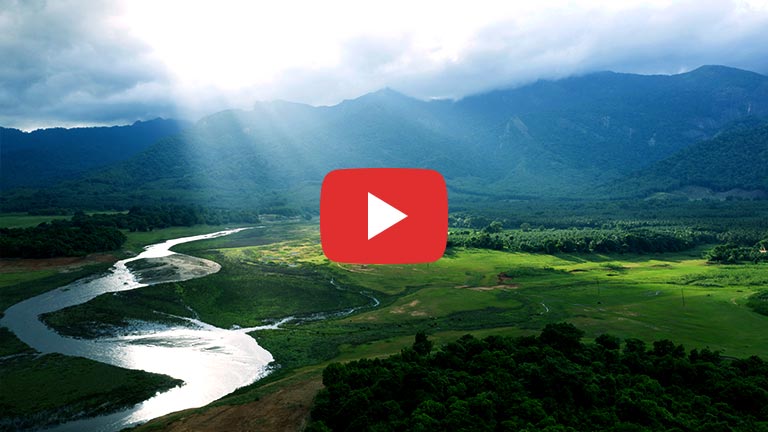Silent Valley National Park

Silent valley, apart from being a veritable treasure trove of flora and fauna, is also home to one of the oldest and last stretches of tropical evergreen rainforests. Cicadas, the insects that produce an incessant noise characteristic of any forest, are absent here. The conspicuous absence of these insects makes the forest comparatively silent and hence the name Silent valley.
During the 1970s, the Kerala State Electricity Board began working out the details of a hydro-electric project to be implemented at Kunthipuzha, a river that is central to the park's existence. The project triggered off protests from various quarters, especially environmentalists. They argued that the project would threaten the unique flora and fauna, disturb the ecological balance and put an end to the bio-geographic isolation of the area. Owing to the protests, the project was abandoned and, in course of time, the state government proclaimed the area a National park.
Silent valley, nestled in the high mountains of the Western Ghats, forms a part of the core area of the Nilgiri Biosphere Reserve. The lush green landscape of the valley has four types of vegetation " West Coast tropical evergreen forest, southern sub-tropical broad-leaved hill forest, Montane wet temperature forest and grasslands. The valley promises a cool climate to soak in, with its altitudes ranging from 725 to 2383 m above sea level. The crystal clear waters of Kunthipuzha flow through the entire length of the valley, enriching it, before finally meeting the Bharathapuzha.
Silent valley harbours more than 960 species of flora. Over 17 species of plants identified here come under the Red List of the IUCN (International Union for Conservation of Nature). Plants of high medicinal value as well as the towering Culinea trees are also found here. It is also home to the Lion-tailed macaque. The valley boasts of numerous orchids of various hues. More than a hundred varieties of orchids can be seen here, including the rare Malabar orchid.
the largest wild cattle, Lion-tailed macaques, Nilgiri langurs, Tigers, Leopards, Civets, Sloth bears and Sambar are some of the wildlife found in this undisturbed forest terrain. With more than 170 species of birds, the valley is an ornithologists' paradise. Out of these, 16 have been listed by Birdlife International as threatened. The Nilgiri Wood pigeon, the Malabar Parakeet and the Nilgiri pipit are found here. The rare birds include Jerdon's Imperial pigeon, the Great Indian Hornbill, the Nilgiri laughing thrush and many others. About 95 different species of butterflies are found here that includes all species of Crow butterflies, Malabar Rose, Buddha Peacock and Blue Nawab.
Entry to Silent Valley might require prior permission from the Assistant Wildlife Warden. From Mukkali, one can hire a jeep to Sairandhri. The jeep journey from Mukkali to Sairandhri is breathtaking, with Nature unfolding its green magic all along the way. From the top of the 100 foot high watchtower at Sairandhri, one can get a bird's eye view of the entire valley. Adventure travellers can trek to Poochappara, Neelikkal, Valakkad or Poovachola.


